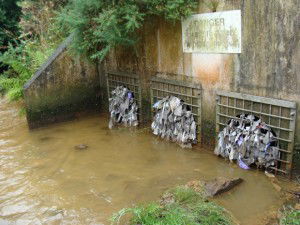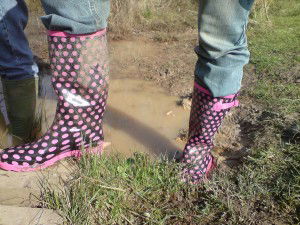Water Saving Week: what a waste!
23rd March 2015
In Britain we take billions of gallons of water from rivers, lakes, reservoirs and underground supplies, clean it up so that is fit to drink, and then convert it into one of the western world’s most abundant, and least desirable, products: waste water.
Waste water is what comes out of our sewage works, septic tanks and factories when we’ve washed, bathed, been to the toilet, or used water in industrial processes. It often contains the polluted runoff from roads and towns that runs into sewers as well (although modern sewers are designed to keep this ‘surface water’ separate for the sewage). Waste water is, quite simply, a revolting cocktail and something we keep largely out of sight and, as far as possible, out of mind.

We take about 10 billion litres of water a year from rivers, lakes and underground supplies for drinking, toilet flushing and other domestic uses. That’s enough water to cover the whole of England to a depth of 10 cm. Then imagine the whole of England sloshing about with 10 cm of sewagey ‘waste water’. That’s what we discharge back into the environment, every year. No wonder waste water is the single biggest and most costly environmental problem.

Waste water may not be as polluting as in the nineteenth and twentieth centuries, but it is still polluting rivers, lakes and streams on a literally industrial scale. In fact, dirty water is the largest product of our society by volume. And even as part of completely legal, highly regulated discharges, waste water is a pollutant. Thousands of miles of our rivers and streams, from tiny headwaters to the estuaries of our biggest rivers are polluted by the dirty water we dump back into the environment. Combined with the dirty water washing off of farmland the huge volume of waste water goes a long way to explaining why 95% of lowland freshwaters are damaged by pollution.
So the less water we use, the less dirty water we put back into the environment. Despite this, many rivers are often largely made up of sewage water, especially at dry times of the year when natural water supplies are low. But we keep on flushing away water like there’s no tomorrow.
One day we will look back on this practice and think “They did that!?”, and shake our heads. For now, the discharge of waste water back into the environment is one of the major causes of the biodiversity crisis facing freshwaters.
 Think about how you can reduce the amount of water you use and therefore the amount of waste water you produce. Waterwise have some suggestions.
Think about how you can reduce the amount of water you use and therefore the amount of waste water you produce. Waterwise have some suggestions.
Spread the word: share this story
#watersavingweek
